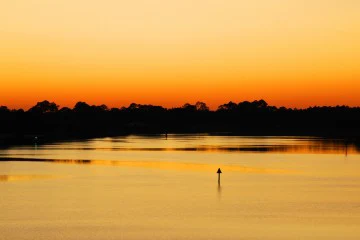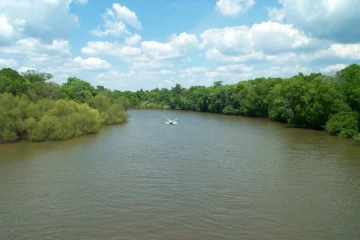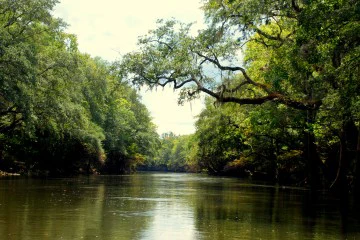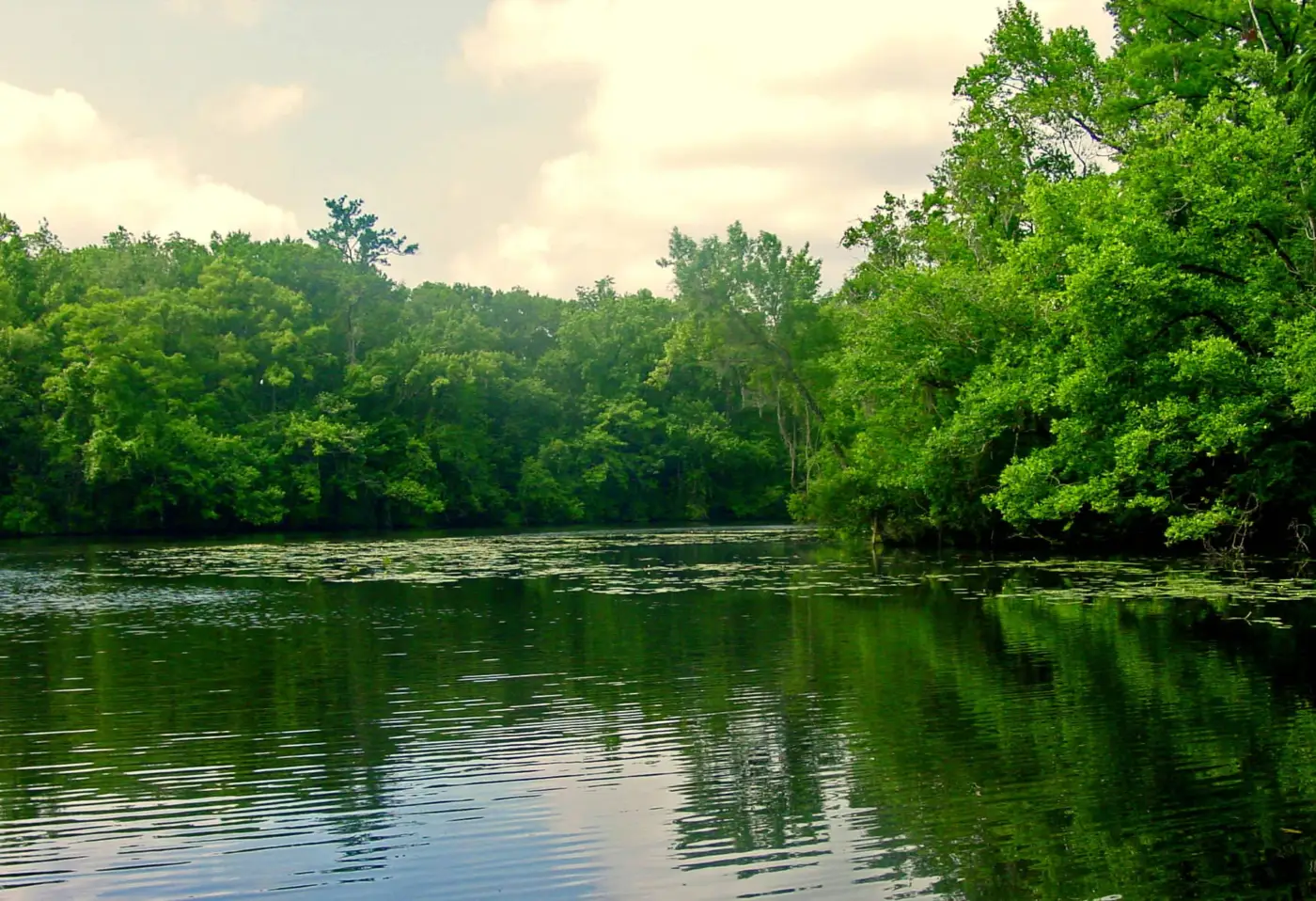Float, Fish, or Paddle Down a Lazy River
The waterways of our majestic rivers are as diverse as their scenic banks. The fresh, brackish waters play an important role biologically as well as recreationally. The opportunities are endless and unmatched for natural beauty and tranquility.

Apalachicola River
Florida’s longest river, the Apalachicola River, meanders more than 100 miles through Northwest Florida and empties into the Gulf of Mexico at Apalachicola. The lower 30 miles of the river are surrounded by extensive swamps and wetlands, except at the coast.
The watershed contains nationally significant forests, with some of the highest biological diversity east of the Mississippi River, rivaling that of the Great Smoky Mountains. The endangered tree species Florida Torreya is endemic to the region; it clings to forested slopes and bluffs in Torreya State Park along the east bank of the river. The basin of the Apalachicola River is also noted for its tupelo honey, high-quality mono-floral honey, which is produced wherever the tupelo trees bloom in the southeastern United States.
Some parks to discover natural habitats along the river include Apalachicola National Forest, Torreya State Park, The Nature Conservancy Apalachicola Bluffs and Ravines Preserve, Tate’s Hell State Forest, Apalachicola River Wildlife and Environmental Area, and Apalachicola River Water Management Area.

Choctawhatchee River
The Choctawhatchee River is Florida’s third-largest river system in terms of water volume discharged. It flows approximately 96 miles from the Alabama state line into Choctawhatchee Bay with tree-lined shores.
Its major tributaries in Florida are Holmes, Wrights, Sandy, Pine Log, Seven Run, and Bruce creeks. The river boasts 13 springs and numerous spring-fed tributaries, according to a Northwest Florida Water Management District’s springs inventory. Favorites are Washington Blue and Potter Springs, both located off Route 79 north of Ebro.
The endangered Okaloosa darter is found in several tributaries, as are the bony-plated Gulf sturgeon, Alligator gar and several other rare snails, reptiles, and amphibians. Habitats range from freshwater springs and steephead streams to tidal marshes and seagrass beds. They also encompass relic dunes, xeric hammocks, coastal scrub, and pine flatwood forests.

Chipola River
The Chipola River, the largest tributary of the Apalachicola, boasts 63 freshwater springs, the largest number of any river shed in Northwest Florida. Its only first-magnitude spring, Jackson Blue Spring, produces almost 86 million gallons a day. The Chipola River’s major tributaries, Rocky, Dry and Spring creeks, are all runs formed from first- and second-magnitude spring groups. Several springs rise directly into the river and ponds, such as Merritt’s Mill Pond, increasing flow and providing unique habitat.

The Ochlockonee River
The Ochlockonee originates in southwest Georgia and flows 206 miles before emptying into Ochlockonee Bay, and then into Apalachee Bay, in Florida. It forms the eastern boundaries of Gadsden, Liberty, and Franklin Counties, passing through the Red Hills, Talquin State Forest, Lake Talquin State Park, and the Apalachicola National Forest.
The Ochlockonee River corridor is home to many threatened fish, wildlife, and plant species. It is a State of Florida designated Outstanding Florida Water and has been identified by the Florida Fish and Wildlife Conservation Commission as a Strategic Habitat Conservation Area. Rare animals that can be found along the Ochlockonee include Red-Cockaded Woodpecker, Least Tern, and the Apalachicola Dusky Salamander, as well as several rare freshwater mussels.
The Florida Maybell tree can be found only along the Ochlockonee and Chipola Rivers. Fishing for bass, perch, bream, and catfish can be excellent on the Ochlockonee River, and a state-designated canoe trail can be found both upstream and downstream of Lake Talquin.
